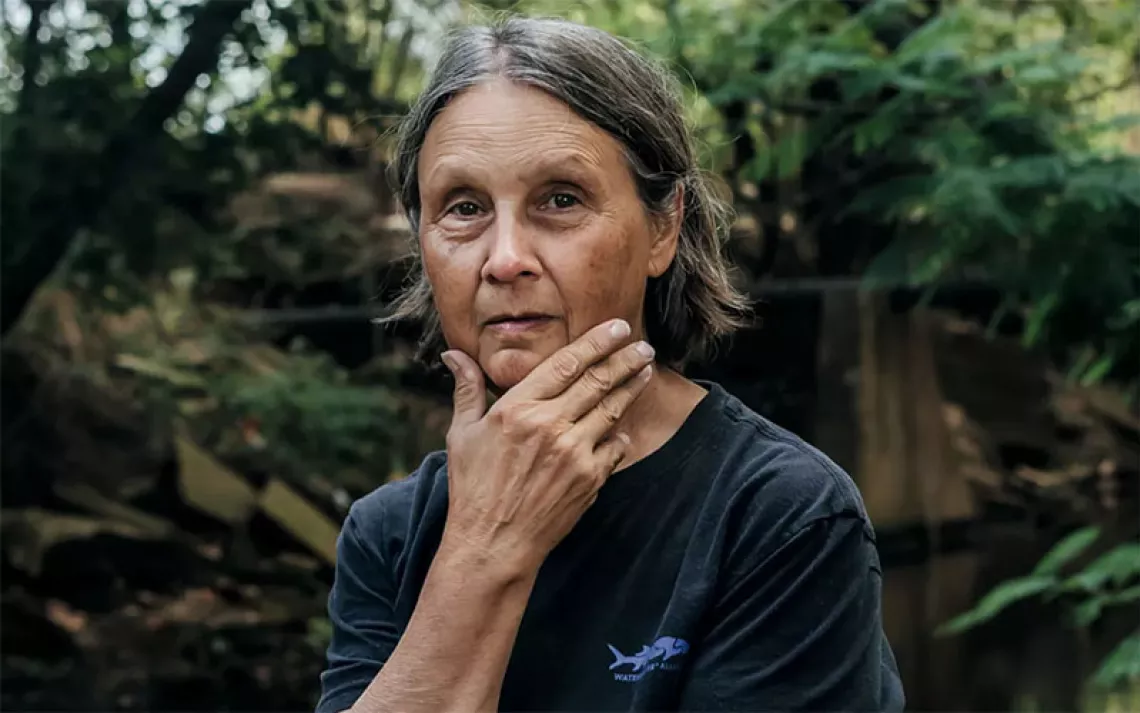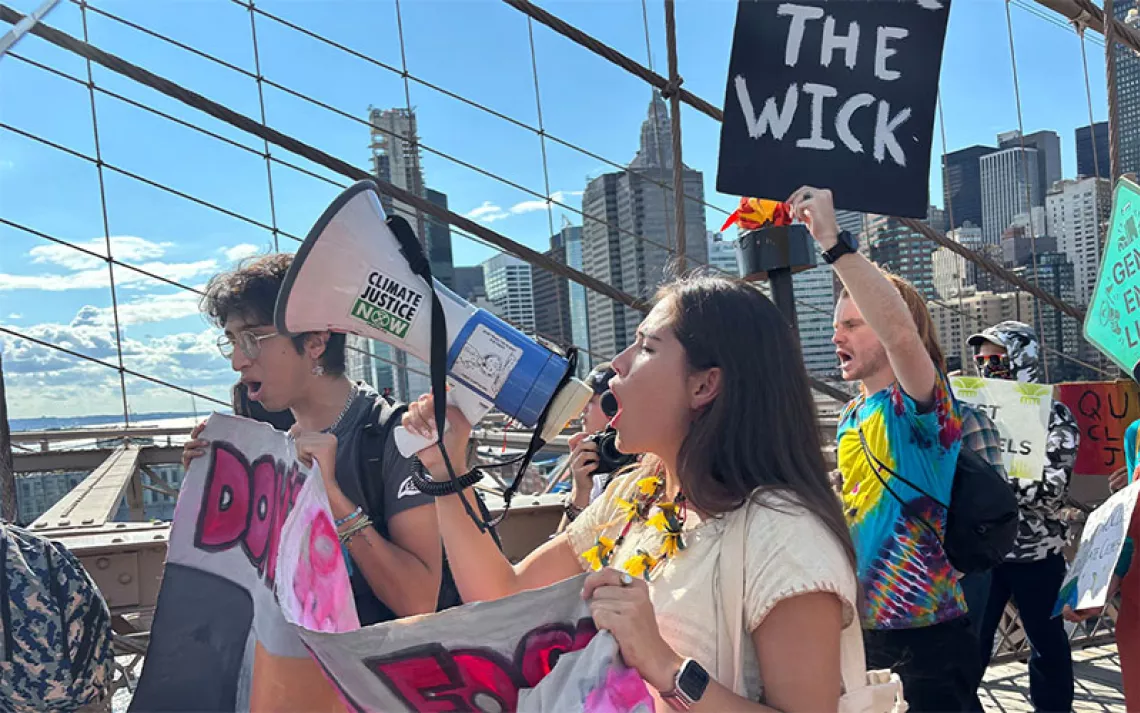Fran Silva-Blayney Is Forever Fighting PFAS
This Sierra Club volunteer works to reduce toxic contamination in Colorado

Photo by Matt Nager
- Name: Fran Silva-Blayney
- Location: Colorado Springs, Colorado
- Contribution: Fountain Creek Water Sentinels chair and Executive Committee chair of the Colorado Chapter
Tell me about the Fountain Creek Water Sentinels.
Our main function is to monitor Fountain Creek, which runs through Colorado Springs, for selenium and E. coli contamination. The data that we collect is used by state agencies to help make policy decisions. I got involved because I've always had an interest in water quality. I like to go fly-fishing, so I spend a lot of time on different bodies of water.
You have also been instrumental in the chapter's work on PFAS contamination. How did that come about?
In 2016, we were approached by a local farmer who told us that her farm had been shut down because of PFAS [per- and polyfluoroalkl substances] contamination. The local aquifer had been contaminated by the firefighting foam used for training exercises at Peterson Air Force Base. They would fill a hangar with the foam and then wash it right into the municipal sewer system, or they would put it in unlined pits so it seeped into the groundwater.
What are PFAS exactly?
They're synthetic chemicals that bioaccumulate in the soil and in our bodies. They don't break down. PFAS exposure is linked to various kinds of cancer and problems with the digestive system. PFAS can interfere with thyroid and kidney functions, and exposure during pregnancy can damage children's brain development.
What did you do once the contamination of the aquifer came to light?
Sonya Lunder, the Sierra Club's toxic policy adviser, and I convinced the chapter to work on state legislation to ban the use of firefighting foam in training exercises. The bill passed last May with strong bipartisan support, which is great because environmental issues should not be partisan. We are all impacted.
But aren't there other sources of PFAS contamination?
Firefighting foam is the most common source of water contamination around the country, but PFAS are in everything—even fast-food wrappers. I now know that all my water-resistant outdoor gear has been sprayed with something that's got PFAS in it—my tent, my boots, my jacket. It's sobering when you start to realize the extent of the exposure. You and I already have PFAS in our system. We need to figure out the sources of exposure and how to stop them. The Sierra Club is leading on community education and making real policy change. I'm really proud to be part of that.
This article appeared in the January/February 2020 edition with the headline "Fighting Forever Chemicals."
 The Magazine of The Sierra Club
The Magazine of The Sierra Club



